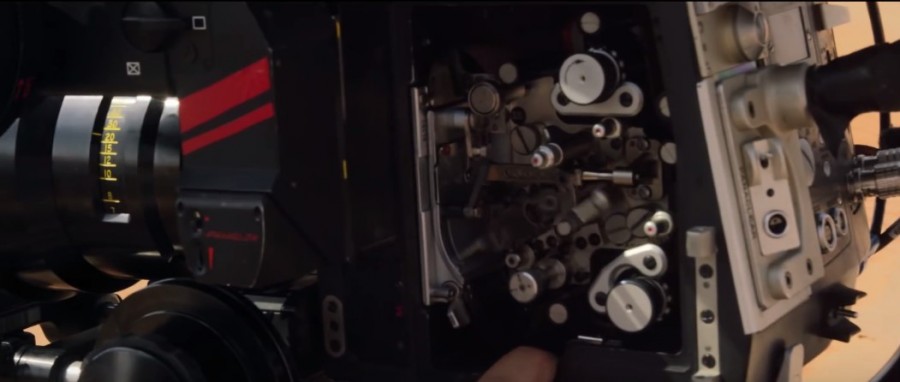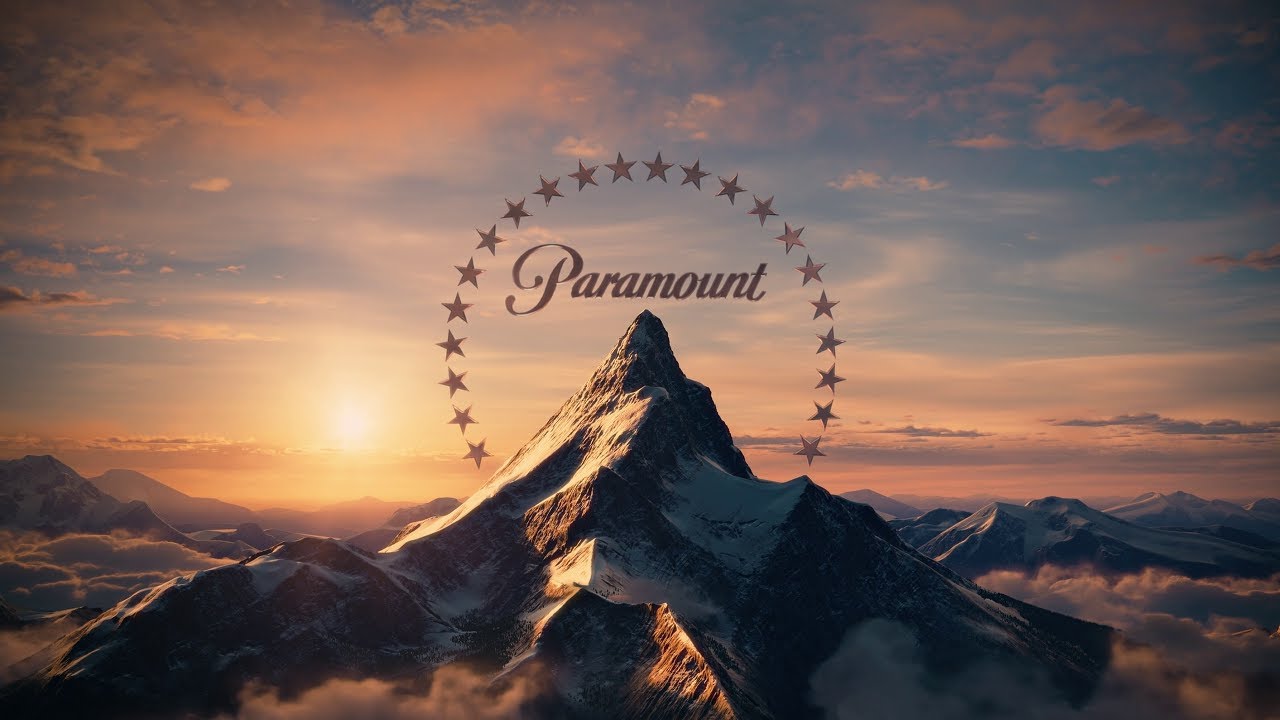Star Wars: Episode IX Will Also Be Shot on Film, Not Digital
 During a panel called “Power of Story: The Art of Film” at the Sundance Film Festival, Star Wars: Episode IX director Colin Trevorrow revealed that he wants to shoot the conclusion chapter of the new trilogy on film.
During a panel called “Power of Story: The Art of Film” at the Sundance Film Festival, Star Wars: Episode IX director Colin Trevorrow revealed that he wants to shoot the conclusion chapter of the new trilogy on film.
From The Hollywood Reporter:
Trevorrow — who shot Jurassic World on film because “this can’t look like two computers fighting, that’s what we kept repeating to ourselves” — humorously noted that signing on to helm Star Wars: Episode IX “gets back to my issue of shooting digital for period films. I could never shoot Star Wars on anything but [film] because it’s a period film: It happened a long time ago!”
As you know J.J. Abrams also shot The Force Awakens on film and Rian Johnson will the the same with Episode VIII. On the other hand Gareth Edwards’ Rogue One will be a digital release. Trevorrow also mentioned that he is aiming for “scope 35 or 65” for Episode IX.
Trevorrow also mentioned a curious question that he asked for Episode IX – “is it possible for us to shoot IMAX film plates in actual space for Star Wars, and I haven’t got an answer yet”. I really hope they do that, and it’s nice to see IMAX discussed for the movie again.
You can watch the whole panel below (from 30min.). It’s 90 minutes long but it’s really interesting and I recommend you check it out.
Founder of SWNN, MNN and The Cantina forums.
Born on April 24, 1980.






Awesome… it’s great that they shot these new episodes on film for longevity’s sake. Frankly, the only difference between digital & film currently is that film can’t practically be shot @ HFR. Without HFR, film is superior to digital because it contains more resolution. In a decade’s time when 8k becomes a reality the 35mm negatives can be scanned & presented in that resolution, but digital can’t.
Once HFR becomes standard, that may be the nail in the coffin for film. There were HFR film cameras & projectors in the olden days but it’s just not practical to assume that it would make a resurgence.
I don’t think HFR will ever take off. It bombed with the Hobbit. It makes movies look like cheap video productions.
That’s because it wasn’t done correctly. Douglas Trumbull (the guy who did the vfx for 2001 Space Odyssey & involved in the projection industry/ HFR advocate) pointed out that Jackson alternated the frames to go Left, Left, Right, Right. (& lets be honest the Hobbit’s HFR wasn’t it’s only failure)
As most things are in their infancy, bumps on the road are to be expected. With trumbull’s guidance, Ang Lee might be producing an HFR film to be released later this year.
Regarding Star Wars… there were a few scenes where HFR would have helped eliminate some problems. If you go see it again… pay attention to the intro when the Stars pan across the screen… they blur out… that’s due to the FPS. Same thing happens during the Cantina seen as the camera moves through the bar, some of the patrons are completely blurred out.
AVS forum wrote about the issue:
http://www.avsforum.com/forum/44-movies-concerts-music-discussion/2259714-star-wars-force-awakens-dolby-vision-hdr-atmos-sound.html
I do think film has an aesthetic in regards to FPS that lend itself to certain types of Story telling, and certainly I think Star Wars falls under that category. But I’d be curious to see the difference & if it would enhance the experience.
HFR looks terrible like a porno or a bad soap opera. You can do HFR with film cameras too, all it is, is a higher frame rate. It was a complete failure and needs to be dropped. I think humans naturally see some motion blur when looking at fast moving things so there’s that. Also maybe 24p is just that magic number where the motion looks real, but there are enough gaps that our imagine takes over. That would explain the dream like state film offers and the way it makes us enter world of the movie.
HFR makes everything stand out, the costumes look fake, the makeup looks caked on, the sets look like card board cut outs, the cgi looks like rubber, it just makes everything look like preprocessed behind the scenes video. Even the emotional contexts is somewhat lost.
I remember watching the Hobbit in HFR and thinking it looked like I was watching some cheap high school play live on stage. Sure it made the 3D smoother and brighter, but I’d just rather watch movie in 2d.
Out of genuine curiosity, is there a benefit to shooting on real film rather than digital? I know cinephiles love the idea of physical film, so its a plus to old-school purists, but I’ve never been able to tell the difference myself.
Yes… sort of.
There is no difference in terms of color or contrast. Both can be processed by the same tools used for post production.
In the long run you will appreciate it because film can be scanned @ higher resolutions. Digital films are mostly shot in 4k, & then are either projected @ 4k or 1080p. The problem is… you can see the pixelation, even @ 4k on a big screen. In the future… say 10 years from now when 8k becomes a thing… all the 4k films shot digitally will remain 4k. 35 mm film can be scanned up to something like 12k.
Film doesn’t pixel-ize… though unfortunately… digital projection does, & I was unable to attend 70mm IMAX screening because I’m in Chicago. (Indianapolis was the closest theater showing film on IMAX). So for 99.9% of people who saw Star Wars on the big screen, they were getting either 1080p or 4k digital… even though the movie was shot on film.
Probably 10 years from now 8k TV’s might be a common thing, & at that point the films shot on 35mm can be scanned & delivered in 8k… like Star Wars. Although there were some entirely digital sequences… I’m not sure @ what resolution those max out at/ if those can be converted to 8k or not.
Thanks for the explanation. I’ve wondered the same thing.
I don’t really notice the difference. Shoot it on whatever u want just make it good is all that matters
“Is it possible for us to shoot IMAX film plates in actual space for Star Wars”
Mind blown!
I wonder if astronomers will recognize the star systems on screen? Neil Degresse Tyson recognized in the 1999 version of Titanic that the wrong night sky was used for that part of the globe… they actually later corrected that after he pestered Cameron about it!
Oddly enough, that would bother me once pointed out.
You know what this means, Star Wars 9 will have space!!!!!!!! Mind blown confirmed
Too much hardcore “geek/nerd cinephile armchair filmmaker” talk going on around here; ironically, these type of folks only represent about 0.05% of moviegoers.
I for sure am guilty of being one of those… however, keep in mind that if people don’t take interest in the tech then it would never evolve. Feel like going back to B&W projection without sound? 🙂
There’s places for the tech to go… at first changes will seem subtle year by year but over the long term the improvements are drastic.
I’m not a film maker… I’m a painter… though I’d wish I’d have gone into film making. It’s a hard career to break into & I didn’t want to end up working the camera crew for weddings or the news.
& Star Wars used to be all about film tech.
It still is, you aren’t alone man.
Haha, that was probably a little harsh of me to say… I was hoping for a giant leap in production techniques like the olden days… but from now on the determining factor will probably be gradual increases in polygon counts.
I remember how I really appreciated what Abrams said about using real sunlight for Daisy when she was in the Falcon (Jakku sequence)… small touches like that really added to the film, while in other parts they could have used traditional techniques to aid the digital sequences.
While that might sound like a regression… I had heard 3D printers were in use for TFA props… I was hoping they’d map some huge digital landscape (like a mangled star destroyer/ or Star Killer base surface structures), 3D print those, & have the CGI falcon flying through the 3D printed wreckage with CGI embellishments.
This just in, Star Wars Episode X will be black and white, and silent.
Just following the insanely stupid logic of some of these filmmakers. Its set a long time ago, so it shouldn’t even be a talkie right? Sinse when does a recording format have to tie itself to the time period? Why is using 1970’s film stock to shoot a civil war movie better than a 4k camera?
They could go all-out and make Episode IX a flipbook of pencil drawings. Or turn it into a Baroque opera.
Episode IX – Space Oats
All this film vs. digital talk is basically the hipster equivalent of listening to music on vinyl records vs. CD’s/digital.
Please enlighten me sir… what properties does digital contain that makes it superior to film? Would you argue that 12 k resolution is worse than 4k?
I’m not referring to comparisons and quality. That’s not what I was referring to in my comment at all (not at all my argument). I’m just referring to people talking about it, especially those that consistently and continuously do it (I’m looking at you Christopher Nolan). I don’t know about you but to me, all this talk on comparisons and preferring one over the other just seems to come off as pretentious, hence my usage of the word “hipster” (let’s face it, “hipster” and “pretentious” pretty much go hand in hand).
Look, if one likes film over digital, that’s fine, but one needs to stop bringing it up at every chance they can get as it just comes off as pretentious.
I get the pretentious thing… You have to admit Interstellar was gorgeous though!
Keep in mind there is reason to be adamant about film… the infrastructure of film production is on it’s last legs. The facilities required to make film & how they operate are costly… so once they go… that’s it. So that’s why there’s been an interest in making people aware of it… those who make content recognize it’s importance… the studios could care less, but without the studios the facilities aren’t supported.
There’s a quasi-famous painter (Chuck Close) who used to work off of mega sized polaroids… but the polaroid plants closed & he was unable to acquire the materials he needed to make his work. In that case it’s no one’s fault really though… people had no use for polaroids anymore except for him… I just bring it up because sometimes commercial interests can prevent great art from being made, & it seems to happen more often when concerning large scale productio
Can’t really argue over that point – as far as the artistic angle goes – but that said, shouldn’t the movie-making industry be progressing and coming up with new ways of recording video? This type of thing may work for those that make private art and show them at art houses and whatnot (a “niche”/cult following sort of thing) but when it comes to Hollywood, specifically large-scale productions that are meant for wide releases, there should be a sense of movie-making technology advancement. Right now, some of these moviemakers, by the way they talk, seem to be feeling too comfortable (if not regressing) with what exists rather than embracing new tech and furthermore, if they’re not using the new tech out there, how is there going to be feedback on said new tech if moviemakers aren’t providing it because they aren’t using it?
You mention that digital filming has limitations as far as resolution goes. Well, if more moviemakers used it and provided more feedback to the companies that make these cameras, perhaps this limitation could perhaps be lessen to the point where movie-makers can overcome such a thing? Who’s to say that digital filming can’t be improved upon further? Companies that make digital cameras could perhaps have more advanced designs today if there were more moviemakers using digital cameras instead of opting for film because they’re comfortable with that more.
The limitations of digital will be overcome with time, but there are a few big hurdles, things that the film industry can’t do much about… to my knowledge the limitations are:
#1. is the processing power & delivery of images @ that speed. Those high end cameras are using powerful processors to take care of all the data… with each increase in resolution the data goes up in huge increments.
Processing technology advancement hit a bit of a wall for a long time, it used to be that Moore’s law could determine what processor speed could be anticipated with future generations. I’ve heard that a new method of processing is in the works, so I guess we’ll see. But 4 years ago I bought a processor & very little speed gains have been made since then.
#2. Cables… HDMI can only handle so much data, new cables had to be invented for 4k to work. 3D wasn’t added as part of the new 4k spec because the HDMI (2.0?) can’t transmit that much data. The only work around is to add multiple HDMI ports with multiple cables to handle one signal, though only the very rich can afford custom systems like that.
#3. Studio infrastructure… the studios are struggling working with 4k as it is. I forget… (S. Korea?) wants to broadcast the olympics on 4k live… so they are working on the tech to do that.
All this being said though… there’s other HUGE advances independent of the medium that’s used for film production. Just recently High Dynamic Range (HDR) has been hitting the consumer market… a few premium theaters project in HDR & some tv’s are just starting to implement it. HDR allows the contrast level to hit extremes that were never possible due to the luminance level of TV’s & projectors… but that’s changing. Color perception will also be enhanced with HDR. I’d say HDR makes a bigger difference than resolution currently.
TV’s companies are also researching new ways to transmit color signals into the displays, especially since Plasma died.
forget film vs. digital, if there is ACTUAL space in episode IX.. man, what a ways we’ve come since 1977 when star wars first came out. although, i doubt anyone would be able to tell the difference between CGI space and real space but it’s the thought that counts ;D
Stop talking and go back to work, Trevorrow. We want something better than your dino videogame.
Not a fan of his but I approve of this idea since digital is not as unique as it was back in the PT and it would be nice to see a film in the saga shot retro style to get back to it’s roots.
why everyone says Episode IX would have actual space?
Colin Trevorrow said that he asked about sending a camera into space to film real-life footage of space.
oh. Hahahah. star wars space was never accurate. So doing an accurate space would make it different than the rest of the films
That’s too bad. I just don’t get why. A movie like The Relevant, which was shot on digital, looked fantastic, whereas I thought TFA (which was shot in film, add announced with a big whoop-de-doop) looked artificial because of all the digital color grading. Presumably they’re going to do that digital color grading anyway. So what’s the point anymore?
OMG, this is going bad. If he hasn’t got the answer about filming in space, REALLY? I can answer him: shut the f up (cant’ we get another director?)